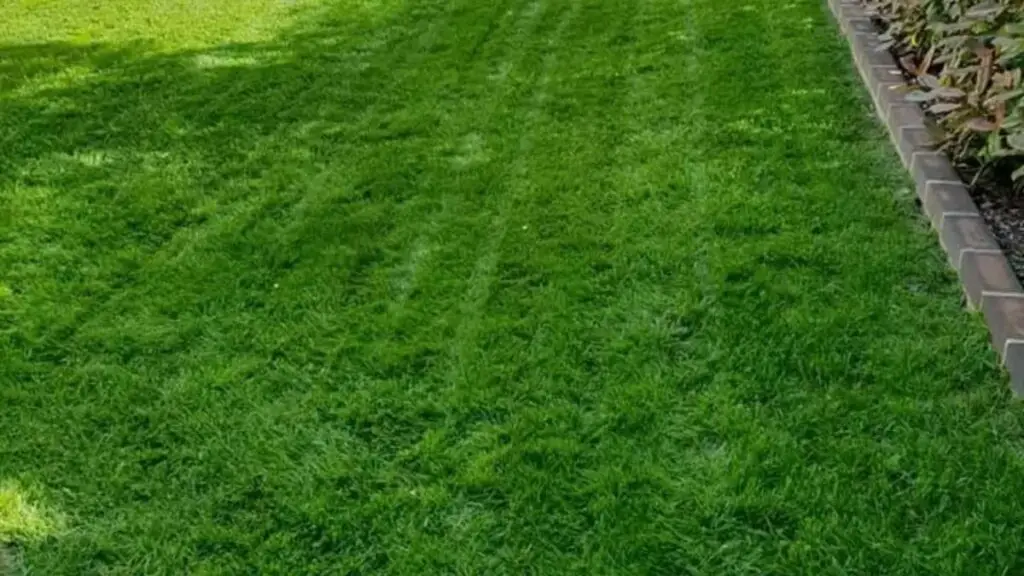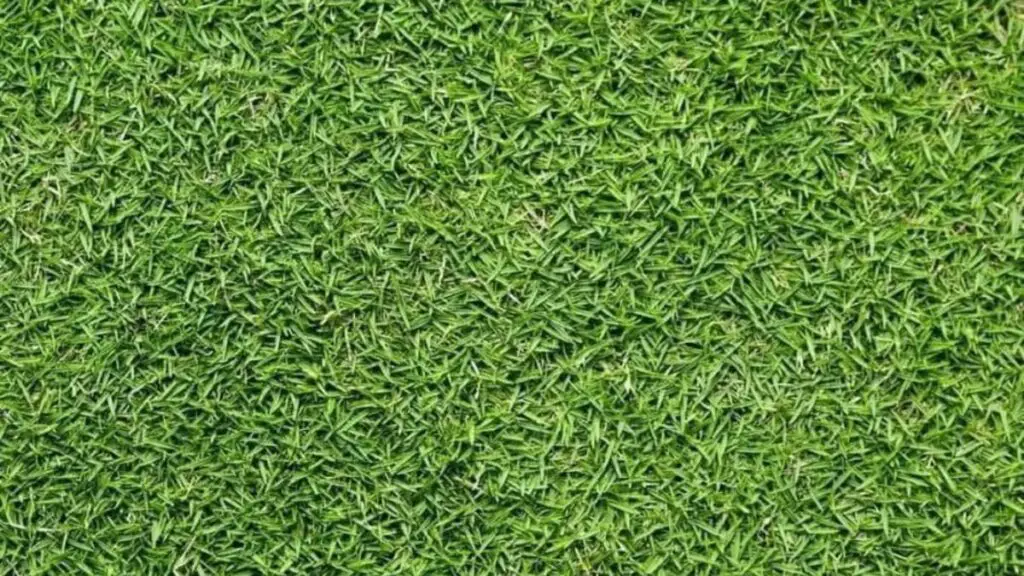Determining which grass type suits your lawn can be challenging. There are numerous grass types in the market for different yards. Moreover, you need to consider the grass requirements to know if they match your lawn.
If you’re unsure whether to grow Ryegrass or Bermuda, this article has you covered. This Ryegrass vs Bermuda comparison helps you choose the best grass type for your lawn.
We’ll compare the two grass types based on growth requirements, shade tolerance, traffic tolerance, growth rate, maintenance needs, and more.
Contents
Ryegrass
Ryegrass is fast-growing cool-weather (cool season) grass grown as temporary/permanent lawn grass. It’s perfect for northern climates where it grows as permanent lawn grass. It’s also popular in southern climates, growing as temporary lawn grass.
This grass has a distinctive dark green hue and fine texture. Besides being lawn grass, farmers use it as pasture for livestock.
Ryegrass is available in two types; perennial and annual. Perennial Ryegrass grows throughout the years and creates permanent lawns. This grass will flourish in cold weather and low-temperate summers.
Contrastingly, annual Ryegrass grows for one season, especially in winter. It, therefore, makes an excellent option for temporary lawns. This grass will keep your lawn green in winter, making it perfect for overseeding.

Bermuda
Homeowners in warmer regions can use Bermuda grass for their lawns. This perennial warm-season grass is best suited for Southern parts of the USA. It’s a tough grass that survives the dry southern summers and grows during spring and summer.
When winter and fall come, this grass turns brown and goes dormant until the next growing season. This growth pattern allows homeowners to overseed Bermuda lawns with the annual Ryegrass to keep their lawns green during the cold seasons.
Bermuda is a fast-growing grass that creates a dense carpet reaching 10-40 cm. The grass’ texture can vary depending on the type you’ve grown. Common Bermuda is rough, while the hybrid option has fine leaf blades.

Ryegrass vs Bermuda Grass: Comparison Table
Below is a quick comparison table to help you choose the grass that suits your lawn.
| Characteristics | Ryegrass | Bermuda |
| Soil and Water Requirements | Soil pH of 5.5-7.5Requires soils with medium- to high-fertility levelsRequires plenty of water | Soil pH of 5.8-7.0Regular fertilizingRequires 1” of water weekly |
| Temperature Requirements | Soil temperature between 50°F and 65°F | Soil temperature between 65°F and 70°F |
| Growth Rate | Fast growth rate | Aggressive growth rate |
| Shade Tolerance | Shade tolerant grass | Not shade tolerant |
| Traffic Tolerance | The highest traffic-tolerant grass among cool-season grasses | Has superior traffic tolerance in warmer climates |
| Maintenance Needs | Mow frequently between 2” and 2.5” | Mow twice a week to around 1” to 2.5” |
| Pests & Diseases | Pests: Grubs, armyworms, and cutwormsDiseases: Leaf spots and red thread | Pests: Fall armyworms and dollar spotsDiseases: Dollar spot, large patch fungus, and spring dead spot |
Let’s detail the Bermuda vs Ryegrass comparison to ensure you settle for the ideal grass type.
Growth Requirements
Ryegrass requires soil with a pH ranging from 5.5 to 7.5. The grass needs continual irrigation during its growing season to help it yield. If you’re growing perennial Ryegrass, give it plenty of water in hot seasons to maintain its color.
Additionally, Ryegrass thrives well in soils with medium- to high-fertility levels. The grass requires frequent fertilizing, particularly with nitrogen-rich fertilizers. You can also grow Ryegrass alongside legumes without fertilizing it with nitrogen.
Regarding Bermuda, you’ll need sandy soil with a pH of 5.8 to 7.0. It requires well-draining soil and routine watering to prevent dehydration. Ensure your established Bermuda receives 1” of water weekly.
Bermuda has an aggressive growth rate, and as a result, it requires regular fertilizing during the growing seasons. Ensure the fertilizer has plenty of nitrogen and some potassium.
Temperature Requirements
Ryegrass grows when the soil temperature is between 50°F and 65°F. As a cool-season grass, it’ll thrive in cooler regions and do well in winter and fall.
Bermuda requires soil temperatures between 65°F and 70°F to germinate. It can thrive when the soil temperature is above 70°F as long as there’s routine irrigation. Unfortunately, Bermuda discolors and goes dormant in low temperatures.
Growth Rate
We will compare the growth rates in this Ryegrass vs Bermuda grass section.
Ryegrass is a fast-growing grass type. It has a high growth rate, germinating in 5-14 days. However, temperature and moisture significantly determine how fast the grass produces a new leaf.
Generally, the grass might produce a new leaf every eight days in mid-spring. In winter, the growth rate is slower, and the grass will take longer to create a new leaf.
On the other hand, Bermuda has an aggressive growth rate during the growing seasons. It spreads above the ground using stolons and below the ground using rhizomes. Its growth rate stops in winter and fall when it goes dormant.
Shade Tolerance
Despite being a cool-season grass, Ryegrass thrives under partial sun for at least 4-5 hours daily. It will also tolerate partial shade. Annual Ryegrass has the best shade tolerance compared to perennial Ryegrass.
Contrastingly, Bermuda grass is not shade-tolerant, making it unsuitable for lawns with trees and structures. This grass requires at least six hours of daily sunlight to grow healthy and green.
Traffic Tolerance
Ryegrass has the highest traffic tolerance among cool-season grasses. If you live in cold climates, you can grow this grass in schools, parks, and homes. Its fast growth rate will help it recover from damage in high-traffic areas.
When it comes to Bermuda, the grass has superior traffic tolerance in warmer climates. The grass suits areas with high foot traffic, such as playgrounds, sports fields, and golf courses. With its aggressive growth rate, Bermuda will recover quickly from injury.
Maintenance Needs
Ryegrass requires regular mowing due to its fast growth rate. If left unattended, this grass will reach your waist. So, ensure you’re mowing at around 2” to 2.5”. In summer, allow your perennial Ryegrass to grow taller and maintain a mowing height of 2.5” to 3”.
Similarly, Bermuda is a high-maintenance grass, especially during its growing season. It grows aggressively, thus requiring regular mowing. Generally, you’ll need to mow this grass at least twice a week. Then, maintain a height between 1” to 2.5.”
Pests and Diseases
The presence of endophytes in Ryegrass gives it some form of natural resistance to pests & diseases. However, pests like grubs, armyworms, and cutworms can invade this grass. The grass might also suffer from leaf spots and red thread.
Like Ryegrass, Bermuda is prone to various pests and diseases. The grass is prone to fungal infections such as dollar spot, large patch fungus, and spring dead spot. Regarding pests, your Bermuda grass might be a victim of fall armyworms and dollar spots.
Bottom Line
Hopefully, this Ryegrass vs Bermuda comparison helps you choose the best grass for your lawn. Ryegrass will be a perfect choice if you live in cold climates. You can also use this grass to overseed your Bermuda lawn. On the other hand, choose Bermuda if you live in warmer climates.
Besides weather, consider factors such as soil quality, water requirements, shade tolerance, and maintenance needs. You’ll keep your lawn healthy and lush green with appropriate grass and proper maintenance.